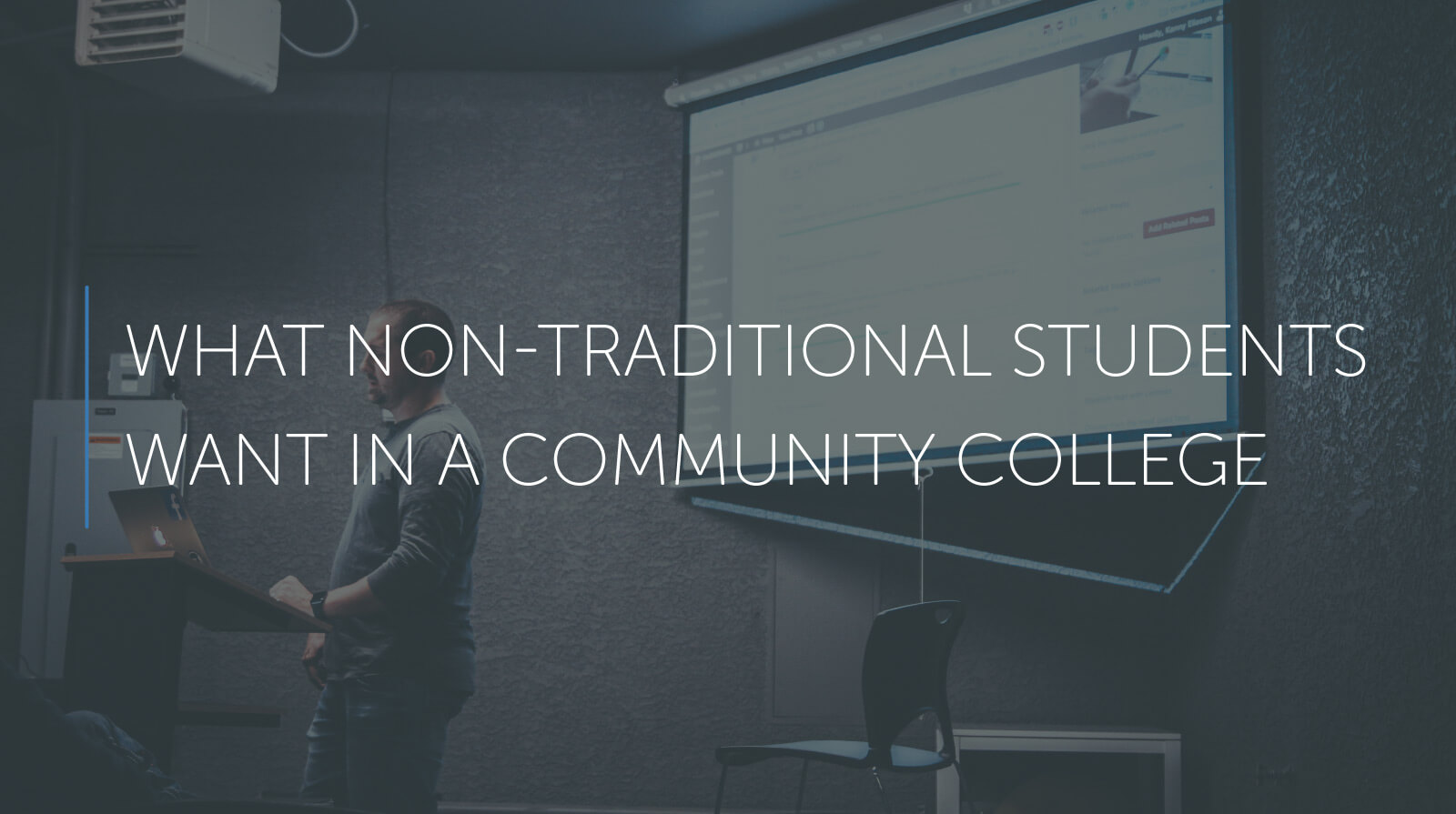Attracting nontraditional learners to your school
If you’re in strategic enrollment management at a community college, nontraditional learners are the most important pool of prospective students to reach. The number of students age 25 years old and over peaked in 2010, but has been declining ever since. Still, this year the majority of the 7.8 million nontraditional students left will be enrolled at community colleges.
Nontraditional learners bring many strengths to the classroom, like maturity, ambition, independence, and a statistically superior academic performance. Nontraditional students tend to have higher GPAs than traditional students (Hutchens). However, they also are more likely to have limited persistence rates, something that becomes an issue as community colleges struggle with non-completing students.
Attracting nontraditional students, and supporting them as they complete their degrees, is a complex issue that requires a multi-faceted approach. However, what couldn’t be clearer is that nontraditional students don’t want a sales pitch. They want stories and information that help them to make the, sometimes very difficult, decision to enroll. They also want an institution that understands their unique needs.
Why do nontraditional students struggle?
In her work on nontraditional students, Mary K. Hutchens offers some possible reasons that nontraditional students do not complete or persist at the same rates as traditional students. First, these students report higher levels of self-doubt, which is perhaps because they’ve had negative prior experiences with education, and adverse life-experiences. Second, when they do complete their credential, it takes them significantly longer than traditional students, because they are more likely to be enrolled part-time.
Nontraditional students want career pathways
Education is a good in itself, but it’s also the way to establish a more lucrative career. Prospective nontraditional students may never have thought that college was for them, but most will be preoccupied with achieving financial stability in their lives.
Predictably, nontraditional students favor vocational education, and see a close connection between what they learn and their work experience. Glossy brochures of smiling eighteen-year-old students at a campus event are unlikely to grab their attention.
Nontraditional students need a welcoming space
Campuses often make an ideal home for traditional students, who feel welcomed in the libraries, residential halls, campus dining areas, and more. However, nontraditional students are already more likely to feel alienated from their peers, and often find campus unwelcoming.
In a recent study of at-risk nontraditional students by Barnes & Noble College, only 3% strongly agreed with the statement “I have friends at my school. Only 5% felt socially connected. And, only 8% felt like they belong at their school. It’s important to create initiatives that help nontraditional students feel connected and part of the campus community.
Nontraditional students demand flexibility
Nontraditional students are far more likely than traditional students to be balancing multiple commitments, to family, work, and school. While this probably is the secret to their laser focus, other things in their lives will take precedence over academics sometimes.
Without flexible course offerings and academic policies, they may become frustrated by the financial and emotional toll that school is taking, and drop out. Creative course offerings and support services, like childcare, can make a huge difference to completion.
Nontraditional students want good information
Because non-traditional students struggle with the financial and practical aspects of returning to school, they want clear and reliable information about the potential benefits. Research has repeatedly shown that nontraditional students return to school after some kind of major life transition (Chao & Good, 2004; Compton & Cox, 2006). Adults who choose to enroll in school after widowhood, divorce, or a job loss are looking for specific, helpful, and trustworthy information about how education can help.
How can marketers deliver what nontraditional students want?
Making an academic institution attractive to nontraditional students clearly requires a coordinated effort. However, the first step is making sure that the kind of information nontraditional students are looking for with easily available. From the perspective of a strategic enrollment manager, it’s clear that vocational programs need to be promoted. It’s also important to share specific information about the career impact of earning a credential, financial aid, and other support services.
A sustained content marketing campaign is the best way to promote your CTE programs and distribute this information. That’s why content marketing is the best way to attract and support prospective nontraditional students, and why it’s produces a far better ROI among this demographic than traditional advertising methods. Distributing helpful long-form content across multiple channels will create sustained interest in your course offerings among prospective nontraditional students.
Not sure where to start with creating a multi-channel content marketing campaign? Maybe it’s time to turn to the experts. Contact Aperture Content Marketing today, so see how we can help you reach nontraditional students and boost your enrollment.
References
Barnes & Noble College. “Supporting Non-Traditional At-Risk Students: Tackling Retention Challenges in Higher Education.” Barnes & Noble College Insights. Retrieved from https://next.bncollege.com/wp-content/uploads/2017/02/Non-Traditional-At-Risk-Report-Final-Jan-2017.pdf
Chao, R., & Good, G. (2004). “Nontraditional Students’ Perspectives on College Education: A Qualitative Study.” Journal of College Counseling. 7 (1), p. 5-12
Compton, J. I., & Cox, E. (2006). “Adult Learners in Transition.” New Directions for Student Services. 2006 (114), p. 73-80
Hutchens K. Mary. “Nontraditional Students and Student Persistence.” ed. Don Hossler and Bob Bontrager. Handbook of Strategic Enrollment Management. vol. first edition, San Francisco, CA: Jossey-Bass, p 333-350


